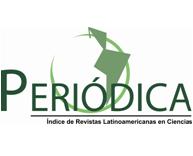DETERMINATION OF THE FEASIBILITY OF USING THE EXISTING REACTOR IN A TEXTILE FACTORY FOR THE NEUTRALIZATION OF WASTEWATER
Keywords:
wastewater, reactor, geometric similarity, simulationAbstract
Introduction:
In the treatment of waste water at the "Desembarco del Granma" textile factory there is a neutralization tank, which resembles a continuous reactor with agitation. This equipment uses H2SO4, which must be replaced by a chemical agent with a lower impact on the environment.
Objective:
To determine the viability of using the existing reactor at the "Desembarco del Granma" textile factory for the neutralization of residual water when using CO2.
Materials and Methods:
Continuous stirred reactors were compared at laboratory and industrial levels, where the criterion of geometric similarity was considered. The Aspen Plus program was used to simulate the industrial reactor, considering the kinetics obtained at the laboratory level. The fluid package selected was the UNIQUAC.
Results and Discussion:
The speed at the tip of the impeller is the same for both reactors and the relationship between the diameter of the impeller and that of the tank remains practically constant, so there is geometric similarity between the reactors. The pH of the residual water neutralized with CO2 was 7.2, showing adequate neutralization.
Conclusions:
Geometric similarity was evidenced between continuous stirred reactors at laboratory and industrial levels. The pH of the neutralized wastewater in the industrial reactor, determined by simulation, was 7.2. It was proven, with the use of Aspen Plus, that the textile company's industrial reactor can be used for the wastewater neutralization process when CO2 is used instead of H2SO4.
Downloads
Downloads
Published
How to Cite
Issue
Section
License

This work is licensed under a Creative Commons Attribution-NonCommercial 4.0 International License.




















